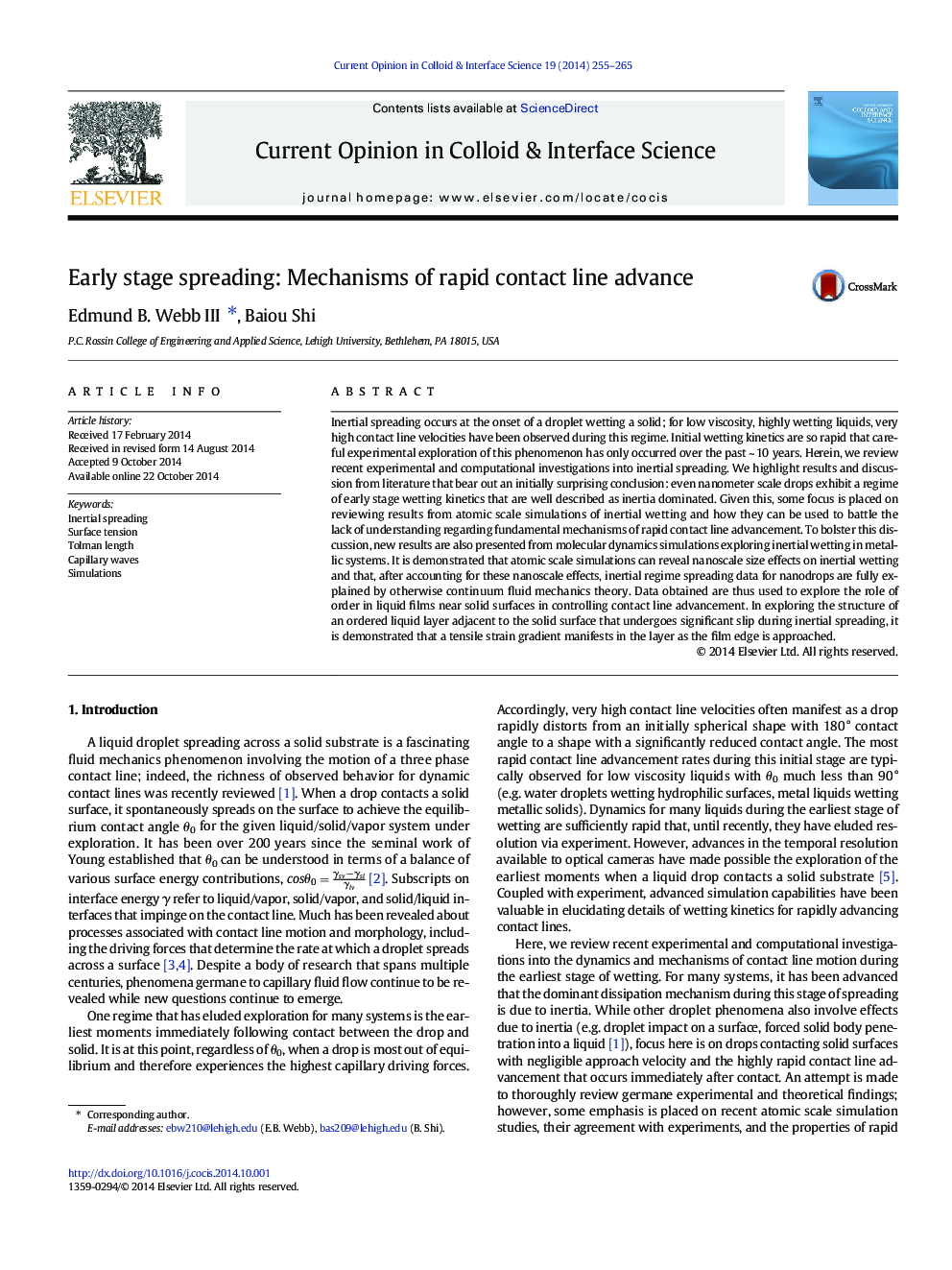| کد مقاله | کد نشریه | سال انتشار | مقاله انگلیسی | نسخه تمام متن |
|---|---|---|---|---|
| 603220 | 880194 | 2014 | 11 صفحه PDF | دانلود رایگان |
• Recent experiments and simulations exploring inertial spreading are reviewed.
• Counterintuitively, nanometer scale metallic drops exhibit inertial spreading.
• Atomic simulations can reveal mechanisms germane to rapid contact line advance.
• Continuum inertial wetting theory, with nanoscale corrections, describes nanodrops.
• A tensile strain gradient exists in spreading liquid layers adjacent to the solid.
Inertial spreading occurs at the onset of a droplet wetting a solid; for low viscosity, highly wetting liquids, very high contact line velocities have been observed during this regime. Initial wetting kinetics are so rapid that careful experimental exploration of this phenomenon has only occurred over the past ~ 10 years. Herein, we review recent experimental and computational investigations into inertial spreading. We highlight results and discussion from literature that bear out an initially surprising conclusion: even nanometer scale drops exhibit a regime of early stage wetting kinetics that are well described as inertia dominated. Given this, some focus is placed on reviewing results from atomic scale simulations of inertial wetting and how they can be used to battle the lack of understanding regarding fundamental mechanisms of rapid contact line advancement. To bolster this discussion, new results are also presented from molecular dynamics simulations exploring inertial wetting in metallic systems. It is demonstrated that atomic scale simulations can reveal nanoscale size effects on inertial wetting and that, after accounting for these nanoscale effects, inertial regime spreading data for nanodrops are fully explained by otherwise continuum fluid mechanics theory. Data obtained are thus used to explore the role of order in liquid films near solid surfaces in controlling contact line advancement. In exploring the structure of an ordered liquid layer adjacent to the solid surface that undergoes significant slip during inertial spreading, it is demonstrated that a tensile strain gradient manifests in the layer as the film edge is approached.
Figure optionsDownload high-quality image (328 K)Download as PowerPoint slide
Journal: Current Opinion in Colloid & Interface Science - Volume 19, Issue 4, August 2014, Pages 255–265
